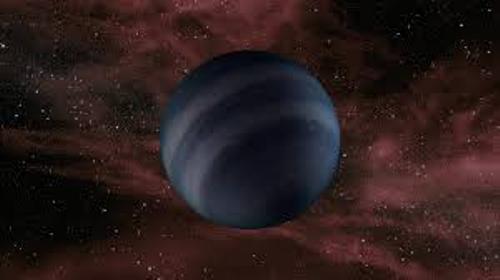It looks like you're using an Ad Blocker.
Please white-list or disable AboveTopSecret.com in your ad-blocking tool.
Thank you.
Some features of ATS will be disabled while you continue to use an ad-blocker.
7
share:
Many of you are familiar with many of the more or less known objects and energies in our Universe. One that i have recently read about is a
theoretical object known as the Black Dwarf.

This object is the literal charcoal or remnant of a white dwarf star, however, none are expected to exist as of now.
These are thus very very cold objects. More about their theorized appearance and atmospheric composition:
Perhaps these objects are very much like diamonds as has been suggested about white dwarfs. Whether any exist now is hard to know at this time, but they will certainly be objects of interest in the future.
en.m.wikipedia.org...

A black dwarf is a theoretical stellar remnant, specifically a white dwarf that has cooled sufficiently that it no longer emits significant heat or light. Because the time required for a white dwarf to reach this state is calculated to be longer than the current age of the universe (13.8 billion years), no black dwarfs are expected to exist in the universe yet, and the temperature of the coolest white dwarfs is one observational limit on the age of the universe. A white dwarf is what remains of a main-sequence star of low or medium mass (below approximately 9 to 10 solar masses (M☉)) after it has either expelled or fused all the elements for which it has sufficient temperature to fuse.[1] What is left is then a dense sphere of electron-degenerate matter that cools slowly by thermal radiation, eventually becoming a black dwarf.[2][3] If black dwarfs were to exist, they would be extremely difficult to detect, because, by definition, they would emit very little radiation. They would, however, be detectable through their gravitational influence.[
This object is the literal charcoal or remnant of a white dwarf star, however, none are expected to exist as of now.
Because the far-future evolution of stars depends on physical questions which are poorly understood, such as the nature of dark matter and the possibility and rate of proton decay, it is not known precisely how long it will take white dwarfs to cool to blackness.[6], § IIIE, IVA. Barrow and Tipler estimate that it would take 1015 years for a white dwarf to cool to 5 K;[7] however, if weakly interacting massive particles exist, it is possible that interactions with these particles will keep some white dwarfs much warmer than this for approximately 1025 years.[6], § IIIE. If protons are not stable, white dwarfs will also be kept warm by energy released from proton decay. For a hypothetical proton lifetime of 1037 years, Adams and Laughlin calculate that proton decay will raise the effective surface temperature of an old one-solar-mass white dwarf to approximately 0.06 K. Although cold, this is thought to be hotter than the cosmic background radiation temperature 1037 years in the future.[6], §IVB.
These are thus very very cold objects. More about their theorized appearance and atmospheric composition:
A black dwarf would have a mainly smooth surface due to the black dwarf's high gravity with very few irregularities (such as mountains). The surface would also be dry with no surface volatiles such as water. The atmosphere of the black dwarf would consist mainly of carbon, and would contain no clouds or weather system due to thinness of the atmosphere
Perhaps these objects are very much like diamonds as has been suggested about white dwarfs. Whether any exist now is hard to know at this time, but they will certainly be objects of interest in the future.
en.m.wikipedia.org...
Fascinating! I had never heard about these until just now. I love hearing about exotic objects in space. This is right up there with magnetars and
pulsars. Love it.
If they exist then it would change the suspected age of the universe by a magnitude or more.
I've read that they'd also have a gigantic diamond inside themselves, because of all the compressed Carbon. Fascinating stuff. I wonder if it would be
possible to land a probe on the surface of a black dwarf.
edit on 4-8-2016 by wildespace because: (no reason given)
a reply to: wildespace
With a mass of 13 to 80 times that of Jupiter, the endeavour would be in the realm of the possible.
I wonder if such an object could attract an atmosphere to itself. I am thinking about a scenario in which the black dwarf travels through a nebula. The high mass could generate enough pull to "steal" gases from the nebula.
With a mass of 13 to 80 times that of Jupiter, the endeavour would be in the realm of the possible.
I wonder if such an object could attract an atmosphere to itself. I am thinking about a scenario in which the black dwarf travels through a nebula. The high mass could generate enough pull to "steal" gases from the nebula.
edit on 4-8-2016 by swanne because: (no reason given)
new topics
-
Just learned a really helpful trick for internet searches
Computer Help: 2 hours ago -
Not off to a good start
General Chit Chat: 4 hours ago -
If they can see...they can read!!
Rant: 11 hours ago
top topics
-
Tesla Cybertruck Explodes in Front of Trump Hotel in Las Vegas
Mainstream News: 17 hours ago, 21 flags -
If they can see...they can read!!
Rant: 11 hours ago, 7 flags -
Just learned a really helpful trick for internet searches
Computer Help: 2 hours ago, 3 flags -
Not off to a good start
General Chit Chat: 4 hours ago, 2 flags
7

